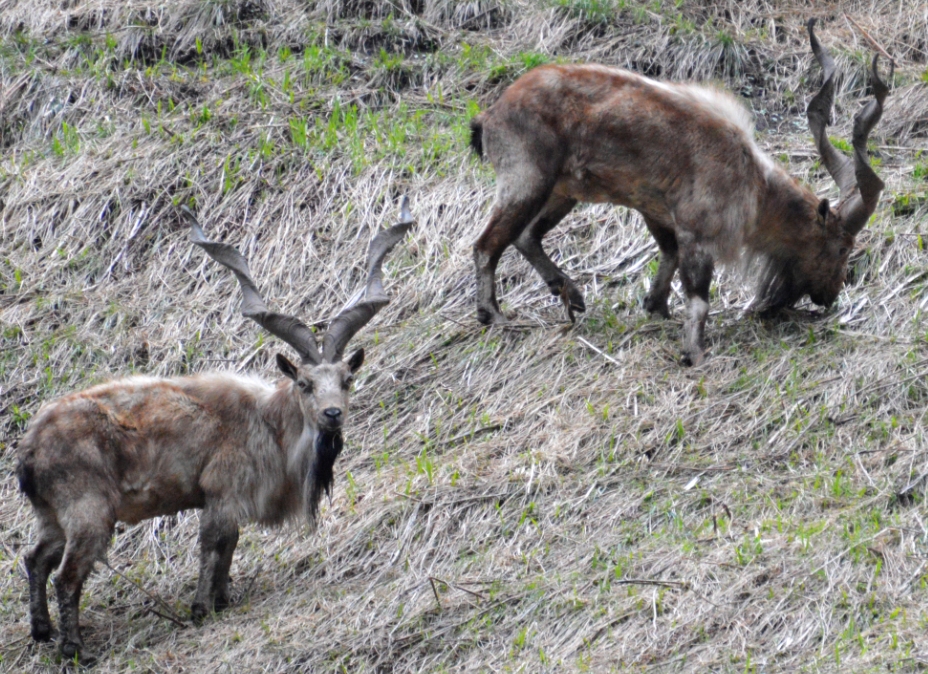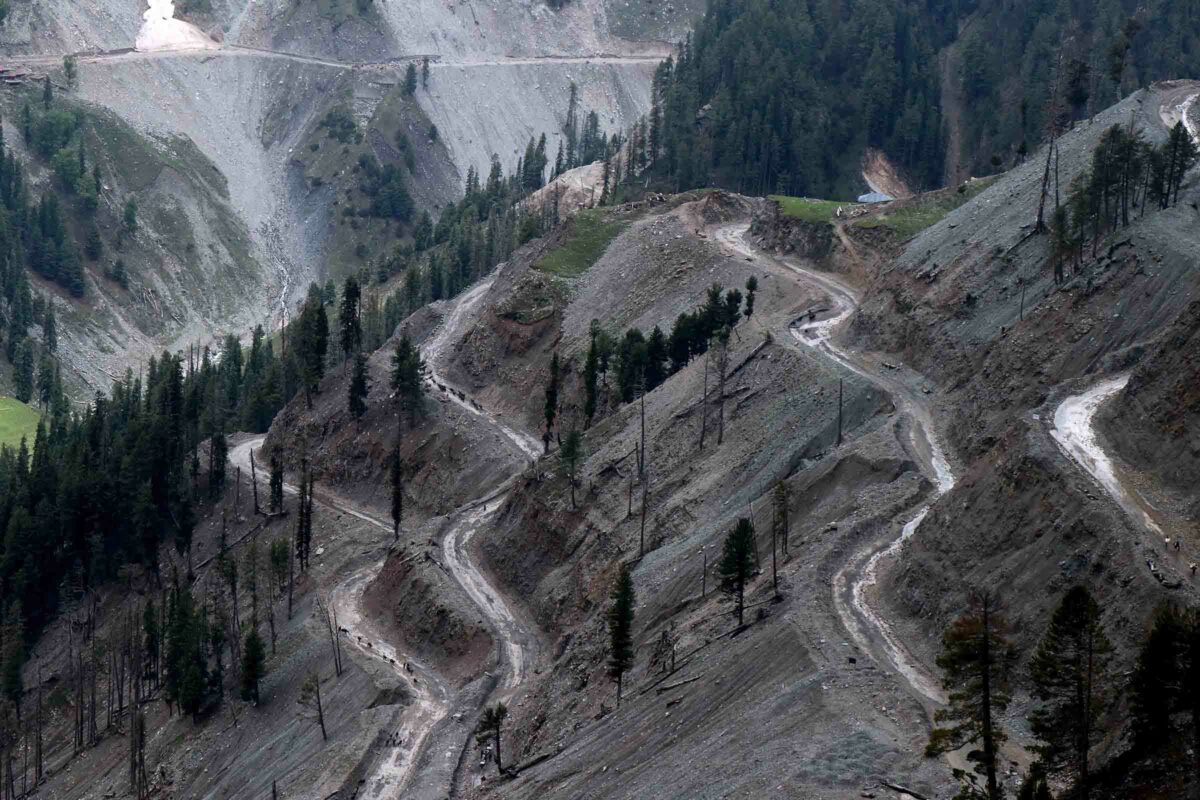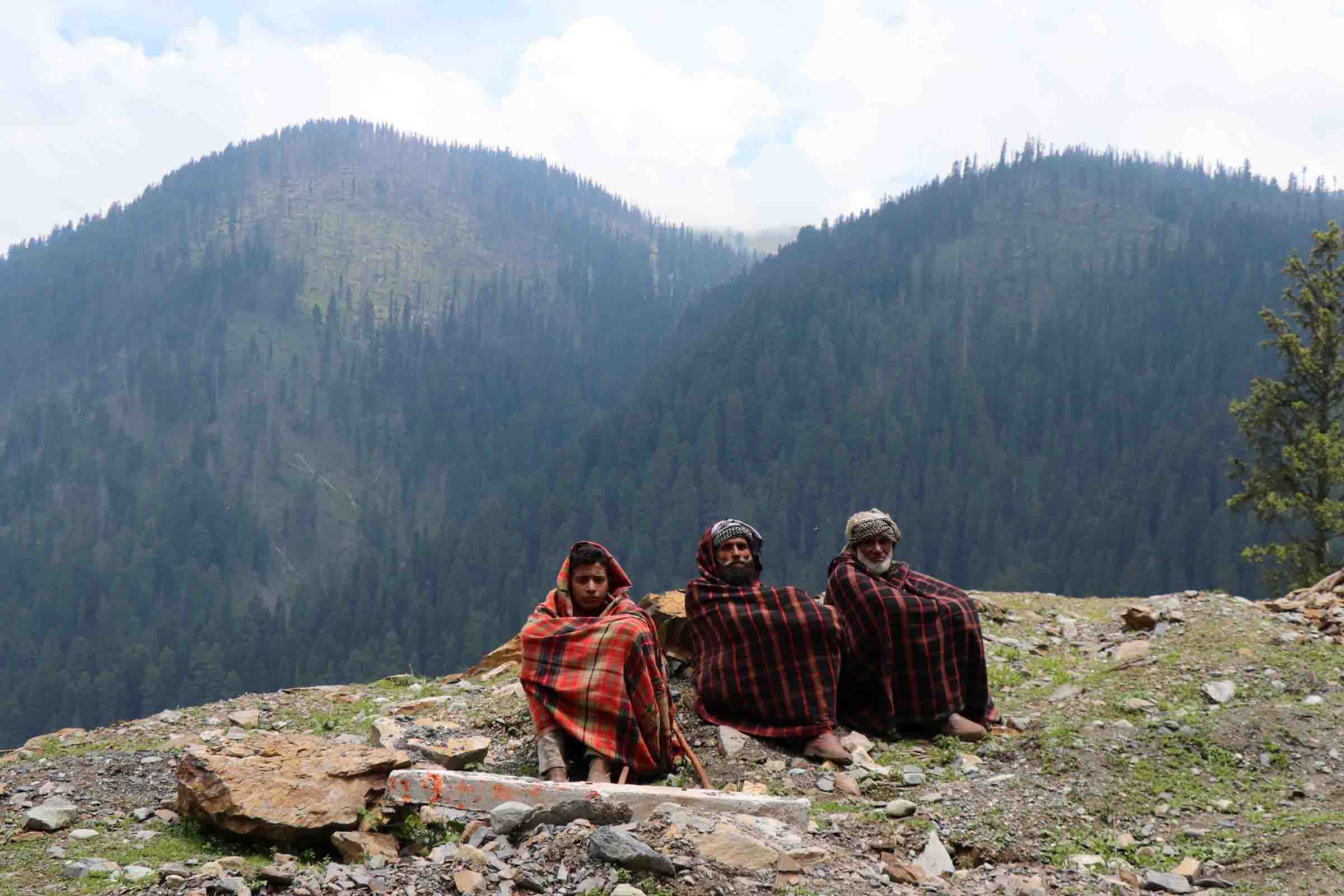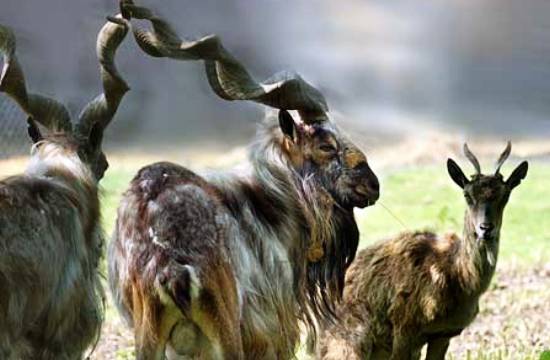Like Hangul, Kashmir is the house to Markhor, a near-threatened species. Formally they exist within the protected areas at Hirpora (Shopian) and Kazinag. The current census instructed the goat numbers have gone down vastly in Shopian in contrast to Uri, reviews Insha Shirazi

For 20 years now, the Wildlife Belief of India (WTI) in collaboration with the Division of Wildlife Safety (DWP) in Jammu and Kashmir is working to preserve the Pir Panchal Markhor. Astral Basis is supporting the initiative. Kashmir is the one dwelling to the critically endangered Hangul (Cervus Hanglu) and the near-threatened Markhor (Capra Falconeri).
Of the area’s 5 Nationwide Parks (NPs) and 15 Wildlife Sanctuaries (WLSs), the Hirpora Wildlife Sanctuary in Shopian is particular. Alongside the Kazinag Nationwide Park in Uri, it hosts a viable inhabitants of Kashmir Markhor.
Unfold over 341 sq km, the Hirpora WLS, round 80 km south of Srinagar, was established in 1987. Its location is fascinating. Surrounded by Gumsar Lake in its north, Hirpora hamlet within the north-east, Rupri to the east, Saransar to the south, and the Pir Panjal go to the west, it encompasses varied habitat varieties, together with combined coniferous forests, sub-alpine scrub forests, subalpine meadows, and alpine habitats.
Apart from Markhor, the biggest wild goat on this planet, the Sanctuary hosts Himalayan black bear, Himalayan brown bear, and Kashmir musk deer. It has practically 130 documented fowl species, together with the Himalayan Woodpecker, Noticed Forktail, Western Tragopan, Rock Bunting, Rufous-Breasted Accentor, Blue Rock Thrush, White-Capped Redstart, Himalayan Griffon, Frequent Stonechat, and Gray Wagtail.
United for Conservation
“Conservation is the artwork of discovering widespread floor amidst divergent agendas and pursuits,” defined Sameer Khazir, Assistant Supervisor of Mountain Ungulate Initiatives on the WTI in Jammu and Kashmir. “Involving native communities is significant for conservation. Educating them concerning the worth of defending species and actively involving them within the course of is essential.”
In comparison with Kazinag, nevertheless, Hirpora helps a smaller inhabitants of Markhor. Throughout the summer season, migratory herders from the Rajouri and Poonch go to the sanctuary. “We construct belief, present training, and provide technique of subsistence to those herders,” Khazir acknowledged. “Our assessments present a discount of their reliance on forest fuelwood after connecting them with authorities schemes and offering round 300 LPG cylinders.”
In Purple Checklist
The Pir Panjal Markhor is listed as Close to Threatened within the IUCN Purple Checklist of threatened species and falls below Schedule-I of the Wildlife (Safety) Act of 1972. “We’ve got linked migratory herders with the NRLM Authorities scheme and fashioned Self Assist Teams (SHGs). Moreover, we’re initiating ecotourism actions in Kazinag and Hirpora,” Khazir shared.
They’ve constituted “Markhor Watcher” teams comprising enthusiastic and passionate youths from native communities, who obtain coaching and are geared up with methods and kit to gather data throughout patrolling. Their position is significant in stopping and detecting poaching. Anti-grazing camps have additionally been established. Vital Markhor Habitats (CMHs) have been recognized by way of discipline surveys, which should stay free from livestock grazing.
Nevertheless, Khazir clarified that the conservation efforts don’t intention to eradicate livestock grazing however handle the rising stress brought on by non-traditional herding practices, the place designated pastures are sublet for materialistic beneficial properties.
These collaborative initiatives are a number of the highlights aimed toward defending the Markhor and its habitats, selling sustainable practices and fascinating native communities within the conservation course of.
The Mughal Street
The Mughal Street, which connects Shopian and Bufliaz splits the Sanctuary into two sections. This historic route poses a big menace to the wildlife within the space.

Zoologist Dr Hameem Mushtaq, who teaches on the Central College of Kashmir, highlighted the problem of nomadic herders as a frequent menace to weak species. He emphasised the necessity for higher infrastructure, equivalent to velocity bumps, alongside the Mughal Street. Apart from, the ability transmission traces passing by way of the Sanctuary pose a extreme menace.
To deal with these considerations, cautious planning and administration are essential. Guests ought to undertake eco-friendly practices and contemplate the affect of their go to, Hameem instructed.
Poaching is a serious menace to the Markhor and species in Kazinag and its surrounding areas. Khazir talked about Lachipora Wildlife Sanctuary and Naganari Conservation Reserve as key areas the place poachers have been reported with firearms and different gear. The migration of those species to decrease elevations throughout autumn and winter exposes them to elevated dangers.
In coordination with the Markhor Watcher teams, efforts have been made to confiscate licensed firearms owned by native communities in and round Kazinag throughout the winter season.
Livestock grazing is extra prevalent within the Hirpora in comparison with Kazinag. Khazir defined that there are 300 Doks (a sort of livestock) in three herder settlements within the Hirpora. Nevertheless, it is very important word that these herders’ long-standing presence doesn’t indicate possession of the protected areas.
Defending Paradise
“Mountain Ungulates, as major customers, are instantly affected by local weather change-induced adjustments in plant phenology,” defined Dr Tanushree Srivastava, Supervisor and Head of the Western Himalaya Mountain Ungulate Mission on the WTI in Jammu and Kashmir. These species synchronize their replica with the provision of meals assets, making disruptions in plant phenology as a consequence of local weather change detrimental to their replica and inhabitants progress.
The mismatch between the height availability of meals assets and the necessities of those seasonally breeding ungulate species has already been reported globally and is anticipated to happen in these mountain ungulate species as properly. The Himalayas being the youngest mountain chain on this planet, are significantly weak to local weather change.
Intesar Suhail, the Wildlife Warden at Shopian highlighted that whereas the melting of glaciers in excessive altitudes is regular, the Hirpora catchment has not but skilled important impacts of local weather change.
Addressing the affect of local weather change on mountain ungulates and their habitat is essential for his or her survival. The vulnerability of the Himalayas to local weather change underscores the necessity for proactive conservation measures and sustainable practices to mitigate the potential dangers and defend these distinctive species and ecosystems.
Counting Markhors
“We collaborated with the Division of Wildlife Safety (DWP), Jammu and Kashmir, to conduct a Markhor census in 2022-23,” Dr Srivastava stated. “The census outcomes revealed a big decline in Markhor sightings in Hirpora in comparison with Kazinag.”

Within the 2004 survey, the Markhor inhabitants within the Sanctuary ranged from 45 to 55 people. Nevertheless, within the current census, solely three Markhor people have been positioned. This decline will be attributed to varied elements, together with heavy livestock grazing, visitors on the Mughal Street, the presence of transmission traces, and ongoing developmental actions. To deal with these considerations, they undertook livestock surveys in Hirpora this yr. The DWP is planning authorized motion in opposition to non-traditional herders and people exceeding the permitted livestock limits.
Guardians The Goat
“Hirpora and Kazinag are the 2 essential protected areas identified for traditionally supporting viable populations of Markhor within the Indian subcontinent,” emphasised Dr Srivastava. “For practically 20 years, the Markhor venture has been a high precedence ‘Species Restoration’ initiative at WTI, working carefully with the Division of Wildlife Safety (DWP), Jammu and Kashmir. The current census indicated that Kazinag nonetheless maintains a wholesome inhabitants of Markhor, in contrast to Hirpora.”
Division of Wildlife Safety is planning to strictly implement the permissions within the protected areas in order that the animal species don’t get disturbed.
“The WTI’s Kashmir Markhor Restoration Mission is taking part in an important position in reviving the Pir Panjal Markhor, a species lengthy believed to be extinct within the UT of Jammu and Kashmir,” Khazir shared. “Our group is devoted to the conservation of crucial Markhor habitats, assessing the affect of human actions and livestock grazing on the Markhor and its habitat. The extension of the Hirpora Sanctuary and the institution of the Tattakuti Sanctuary have been achieved by way of coordinated efforts. Nevertheless, further interventions are actually required to mitigate the results of overgrazing and wildlife crime.”
“We’ve got developed a complete Administration Plan for a ten-year interval, which guides our actions and implementation,” Suhail defined. “Key points we handle embody habitat conservation, soil conservation, afforestation, and anti-grazing measures. Our actions vary from round the clock patrols to fight poaching and unlawful looking, establishing grazing season camps, combating timber smuggling, developing watchtowers for infrastructure, and conducting common wildlife inhabitants monitoring.”

“With help from the Division of Wildlife Safety, J&Ok, and beneficiant donors just like the Astral Basis, the Wildlife Belief of India has made important strides within the conservation of Markhor in J&Ok,” Srivastava added. “This yr, we plan to develop the attain of the Markhor Restoration Mission by way of intensive and impactful interventions, elevating consciousness by way of outreach packages and inspiring individuals to change into extra acutely aware and accountable stewards of Markhor and wildlife conservation in J&Ok as a complete.”
By elevating consciousness, involving native communities, and implementing sustainable tourism practices, it may be ensured that the safety and preservation of those exceptional areas and the species that decision them dwelling. The collaborative efforts of conservation organizations, authorities departments, and the energetic participation of tourists will play an important position in securing a brighter future for the Markhor and the delicate ecosystems they inhabit.
#Mughal #Street #Development #Led #Decline #Markhor #Hirpora

